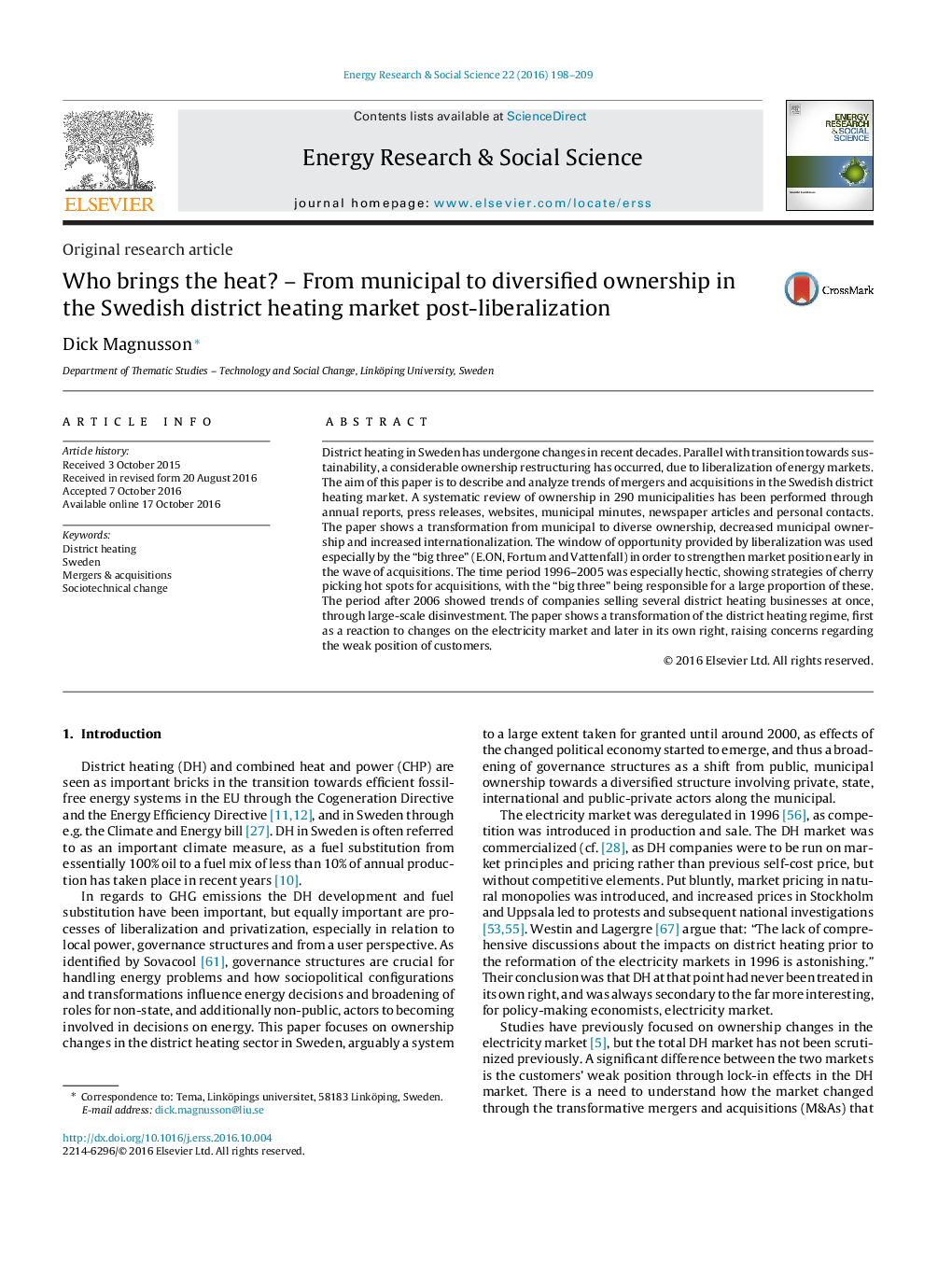| کد مقاله | کد نشریه | سال انتشار | مقاله انگلیسی | نسخه تمام متن |
|---|---|---|---|---|
| 6464176 | 1422579 | 2016 | 12 صفحه PDF | دانلود رایگان |
- Commercialization of the Swedish district heating sector changed the ownership structure.
- Ownership has been diversified, geographically redistributed and internationalized.
- Cherry picking of lucrative hot spots has occurred by large non-municipal actors.
- Large scale-disinvestments occurred after 2007 in regard to changed strategies.
- Remunicipalication of district heating companies has occurred.
District heating in Sweden has undergone changes in recent decades. Parallel with transition towards sustainability, a considerable ownership restructuring has occurred, due to liberalization of energy markets. The aim of this paper is to describe and analyze trends of mergers and acquisitions in the Swedish district heating market. A systematic review of ownership in 290 municipalities has been performed through annual reports, press releases, websites, municipal minutes, newspaper articles and personal contacts. The paper shows a transformation from municipal to diverse ownership, decreased municipal ownership and increased internationalization. The window of opportunity provided by liberalization was used especially by the “big three” (E.ON, Fortum and Vattenfall) in order to strengthen market position early in the wave of acquisitions. The time period 1996-2005 was especially hectic, showing strategies of cherry picking hot spots for acquisitions, with the “big three” being responsible for a large proportion of these. The period after 2006 showed trends of companies selling several district heating businesses at once, through large-scale disinvestment. The paper shows a transformation of the district heating regime, first as a reaction to changes on the electricity market and later in its own right, raising concerns regarding the weak position of customers.
Journal: Energy Research & Social Science - Volume 22, December 2016, Pages 198-209
